#most popular fashion designers in india
Explore tagged Tumblr posts
Text
Top Designers of India: Shaping Fashion and Aesthetic Landscapes
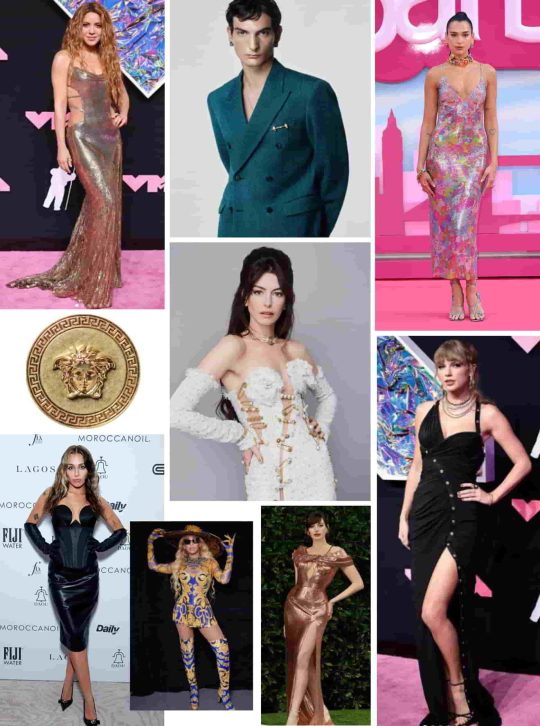
India has a rich history of craftsmanship and textiles, making it a fertile ground for the top designers of India who draw inspiration from its cultural diversity, traditional heritage, and modern sensibilities. Over the past few decades, several Indian designers have not only made a mark within the country but have also gained global recognition. Their work bridges the gap between tradition and modernity, blending the essence of Indian textiles and techniques with contemporary design. This blog explores some of the top Indian designers who have shaped the fashion and design landscape both in India and globally.
1. Sabyasachi Mukherjee
When talking about Indian designers, Sabyasachi Mukherjee is an unmissable name. Known for his deep-rooted love for Indian heritage, Sabyasachi's work revolves around reviving traditional crafts and textiles, making them relevant in modern fashion. His collections often feature intricate embroidery, hand-woven fabrics, and vintage aesthetics that draw from India’s rich cultural history.
Sabyasachi is particularly famous for his bridal collections. His bridal lehengas and sarees are coveted for their regal and timeless quality. He has dressed several Bollywood stars, including Priyanka Chopra, Deepika Padukone, and Anushka Sharma, for their weddings, making his label synonymous with high-end bridal wear. His collaborations with global brands like Christian Louboutin and Pottery Barn have cemented his name on the international stage as well.
A key element of Sabyasachi’s work is his storytelling. His designs are often seen as a narrative, each piece telling a story of its own. Through his Instagram and marketing campaigns, he creates a visual world that captivates the imagination of fashion enthusiasts.
2. Manish Malhotra
Manish Malhotra is perhaps the most celebrated designer in Bollywood. His work as a costume designer in the film industry has earned him a distinct place in Indian fashion. Malhotra has designed costumes for some of the most iconic Bollywood films, including "Dilwale Dulhania Le Jayenge," "Kabhi Khushi Kabhie Gham," and "Kal Ho Naa Ho."
Beyond his work in films, Malhotra's bridal and couture collections are well-known for their glamour, opulence, and attention to detail. He frequently uses luxurious fabrics like velvet, silk, and brocade, embellished with crystals, sequins, and heavy embroidery. His designs are characterized by a perfect blend of tradition and modernity, making him a favorite among brides and celebrities.
Manish Malhotra's contribution to the fashion industry goes beyond just design. He has also been a pioneer in bringing Indian fashion to the global stage. His shows, both in India and abroad, have garnered significant attention, and his label is one of the most recognizable in the country.
3. Ritu Kumar
One of the pioneers of Indian fashion, Ritu Kumar, is credited with reviving traditional Indian crafts and textiles at a time when the fashion industry was predominantly Western-centric. She started her career in the 1960s when the Indian textile industry was struggling, and with her keen understanding of ancient art forms, she began working with local artisans to create beautiful handcrafted clothing.
Ritu Kumar's designs are known for their unique blend of contemporary and traditional styles. Her use of natural fabrics, intricate embroideries, and ethnic motifs makes her collections stand out. Over the years, she has built a reputation for producing exquisite bridal wear, elegant sarees, and ready-to-wear collections that appeal to a wide audience.
What sets Ritu Kumar apart is her commitment to sustainability and ethical fashion. She has played a key role in promoting slow fashion, ensuring that Indian crafts and techniques continue to thrive in a fast-paced, globalized world.
4. Tarun Tahiliani
Tarun Tahiliani is renowned for his luxurious and elaborate designs, often described as "India modern." He is one of the first Indian designers to have blended Indian textiles and draping with Western silhouettes and construction. His ability to merge Indian craftsmanship with modern trends has made him a trailblazer in the Indian fashion industry.
Tahiliani is particularly known for his bridal couture, which combines heavy embroidery, structured silhouettes, and innovative draping. His use of zari, zardozi, and chikankari work has set new benchmarks in bridal fashion. However, it’s not just bridal wear where he excels; his ready-to-wear collections also have a strong global appeal, and he has dressed several international celebrities.
In addition to his fashion label, Tahiliani has ventured into interior design, where his signature aesthetic—opulent yet modern—can also be seen.
5. Anamika Khanna
Anamika Khanna is a designer who is known for pushing the boundaries of traditional Indian wear. Her designs are often a confluence of Indian and Western fashion, resulting in fusion wear that is contemporary yet deeply rooted in tradition. She is particularly recognized for her signature dhoti pants, capes, and layered garments, which have become a trendsetter in modern Indian fashion.
Khanna was one of the first Indian designers to showcase her collection at Paris Fashion Week, putting her on the global fashion map. Her designs are bold and innovative, yet they retain a sense of Indian cultural identity. She frequently uses indigenous techniques like hand embroidery, but with a modern twist.
Her work is loved by fashion-forward celebrities, including Sonam Kapoor and Kareena Kapoor Khan, who often wear her designs at high-profile events.
6. Abu Jani and Sandeep Khosla
The design duo of Abu Jani and Sandeep Khosla is known for their flamboyant, extravagant, and quintessentially Indian designs. They are celebrated for their use of chikankari, zardozi, and mirror work, which they have elevated to a form of high art. Their designs often feature a rich color palette, intricate embellishments, and a timeless appeal, making them a favorite among Bollywood celebrities and international clients.
Their couture is often seen at big Indian weddings, film premieres, and on red carpets. Over the years, Abu Jani and Sandeep Khosla have developed a signature style that is opulent, traditional, and luxurious, yet surprisingly wearable.
7. Masaba Gupta
Masaba Gupta, the daughter of actress Neena Gupta and cricketer Vivian Richards, is one of the most exciting young designers in India. She is known for her quirky and bold designs, often featuring playful prints and unconventional color combinations. Her work is a reflection of her modern, eclectic style, which appeals to young, fashion-forward women.
Masaba's brand is one of the most successful contemporary labels in India. She has been a trailblazer in using digital prints and sustainable fabrics, making her label both stylish and eco-friendly. Masaba’s clothes are a reflection of her personality—fun, vibrant, and unapologetically Indian.
8. Rohit Bal
Rohit Bal is one of India’s most flamboyant designers, known for his bold and extravagant designs. His work often features intricate embroidery, rich fabrics, and a blend of traditional and contemporary styles. He has dressed some of the biggest names in Bollywood, including Amitabh Bachchan and Deepika Padukone, as well as international celebrities like Uma Thurman.
Bal is known for his showmanship, and his fashion shows are often theatrical events that showcase his larger-than-life personality. His work has a regal quality, drawing inspiration from Indian royalty and traditional motifs, but with a modern twist.
Conclusion
India’s fashion landscape is as diverse and vibrant as the country itself, and its designers reflect this unique blend of tradition and modernity. From the opulent bridal wear of Sabyasachi Mukherjee and Manish Malhotra to the innovative fusion styles of Anamika Khanna and Masaba Gupta, Indian fashion is continuously evolving. These designers have not only influenced how India dresses but have also played a significant role in bringing Indian fashion to the global stage.
Whether through their use of traditional craftsmanship or their bold, contemporary styles, these designers have shaped the future of fashion, leaving an indelible mark on both India and the world.
1 note
·
View note
Text
Amazon Palazzo Category Best keywords list Jan 2024
Howdy, Amazon.in is one of the leading market place here in India,Each and every vendor who is suppose to work online will be a part of the market place. The latest tending keywords for the portal to list your products. Below are the top 5 keywords which can be used in the Ethnics category for “Palazzo” on the market place Amazon.in Palazzo Pants for women Palazzo sets for women Palazzo…
View On WordPress
#amazon keyword generator#amazon keyword research extension#amazon keyword tool for free#amazon keywords#best free amazon keyword research tool#best keywords for amazon#Cotton Palazzo pants#Flared Palazzo pants#How to find best keywords for amazon#keywords for amazon example#keywords for amazon free#keywords for amazon html#List of keywords for amazon#Most popular keywords for fashion#most searched keywords on amazon India#Palazzo Cotton#Palazzo pants combo#Palazzo pants design#Palazzo pants for girls#Palazzo pants jeans#Palazzo pants wit kurti#Palazzo pants with tops
0 notes
Text

Shop Black Light Weight Denim For Women Online From Canoetrends in India. For everyday wear, the Women's Black Light Weight Denim from our online store is the ideal option. These lightweight denim jeans are airy and perfect for warm weather because of their light weight denim construction. It's been a while since I've done this, but I have a feeling that I'm going to have to do it again. For a chic, relaxed style, combine them with a laid-back blouse or shirt.
#Mens designer clothes Online in India#Casual Jacket for men online in India#Trendy casual shirts#Branded showrooms near me#Clothing brands showroom near me#Casual Blazer for men fashion#Casual t-shirt for men Online#Wedding wear for men online#Best branded jeans for men#Best casual clothes for men Online#Most popular men's clothing brands#Best men's casual clothing brands#Best casual cotton trouser for men online#White formal shirt for men online#Half sleeve shirts for men
0 notes
Text

Visit our website at https://pexels-ind.com/ to acquire the most recent articles and blogs about Art and design. There, you will get regular updates on everything linked to art. In India, there are several well-read blogs about creativity and the arts. These blogs cover a variety of topics, including Travel, Food, and personal life. Pexels-ind serves as a one-stop shop for all of your blogging requirements.
#trending blogs to read#latest trending blogs#top headlines news#breaking news today#fashion#food#health and fitness blogs#art blog#art and design#best personal blogs 2023#latest news updates#most popular blogs 2023#best personal blogs 2022#popular blogs in india#politics
0 notes
Note
Sorry, could you elaborate on Peter Doggett's book a little more? It's the first time I've heard about it. What is the theory why John stayed in the Dakota? Thanks!
So, "Prisoner of Love" was supposed to be the next Big Beatles Book to come out. It has been written and for a while there were advanced reader companies being sold on Amazon India. Unfortunately I wasn't quick enough to buy it and it disappeared. But essentially "Prisoner of Love" was supposed to be Peter Doggett's investigation into John Lennon's years at the Dakota building when John had returned to Yoko/been blackmailed into returning. Doggett is an actual journalist with a genuine bibliography behind him and he does actual investigatory work that doesn't rely on manufacturing Frankenstein quotes to get his point across. He also wrote the legendary "You Never Give Me Your Money" which breaks down the financial woes of the Beatles into a digestible form so that we can understand the financial side of the break up.
Suffice to say the topic of John's stay in the Dakota, Yoko forcing him to stay addicted to drugs, and abusing him and Sean emotionally and psychologically, is a very serious and contentious subject. So much so that the Lennon Estate has most likely spiked the book and stopped it from being published, probably because it makes Yoko look like the monster she is.
I'll quote Hey Dullblog here:
In 2012, St. Martin’s Press contacted me via my semi-highfalutin’ agent in New York. “I loved your Barry Trotter books”—the ones that sold a million plus worldwide—“and have always wanted to work with you. There’s a project idea we have, are you interested?” Sure I was. They wanted me to do a parody of Downton Abbey, Julian Fellowes’ costume drama popular at the time and, as Kate and I were fans of the show, I readily agreed to write the parody. But before I did, I asked the $64,000 question: “Are all the higher-ups behind this book? Have you gotten a sense of what Julian Fellowes might think? Parodies often get sued—are you prepared for that?” Yes to all this, the editor said, and he and my agent began negotiating the deal, while I got down to the writing and designing of the parody. At great speed, of course, because it was July or something, and they wanted it for their fall list.
Six weeks later, I finished the project on deadline, and presented it to them for publication. I’d been showing my editor chapters as I’d written and designed them, and gotten much laughter and encouragement. All lights were green.
Until, one morning, they weren’t. Instead of paying me the agreed-upon $30,000 for a book which they’d asked me to write, and had approved of in-process—they suddenly offered me $5,000 “to put the manuscript in a drawer permanently.” All communication with me stopped; even my agent couldn’t get a straight answer as to what had happened. It was, of course, completely illegal to do what they had done, get me to write a book to order on spec with a false promise, but neither my well-respected New York agent, nor my $400/hour New York publishing lawyer would back me in a lawsuit. “Mike, I’d never be able to sell another book to them again,” said my agent; with so few publishing houses, backing me and the stink I planned to make would hinder his other clients, and spell career doom for him. And my lawyer, too, made all her money working with these companies. They both required good relations with the publishing houses, not with me, the guy who they nominally worked for.
So I Kickstarted the book, and said sayonara to book publishing for good. The contracts are terrible, there is no Union, and the structure of the business itself compromises an author’s representation. And the houses themselves—with all due respect to the many smart and ethical people who toil for them—are purest courtier culture, as bad in this regard as fashion or Hollywood. As large companies, book publishers are exquisitely sensitive to pressure; as individuals, most of them come from the best (read: most expensive) schools, and must come from significant money to be able to pursue such a poorly paid career in such an expensive city. And finally, since 1980 the book publishing business has not only really embraced the blockbuster model, they have increasingly looked to Hollywood for their ethics. And in Hollywood, fame and money rules. Star-power.
I think what happened was that some editor had a bright idea, contacted me, and got me writing. His higher-ups, such as they were paying attention at all, had no very clear idea what “a parody” would be, thinking that it was something sorta like an original, only funny. Then, when it came time to publish the manuscript—traditional literary parody, as I’d done with Barry Trotter—either someone inside the house thought Fellowes wouldn’t like it and pre-censored themselves, or Fellowes himself said he wouldn’t like it. “You publish this, and I won’t even let you bid on the Downton Abbey Calendar!”
I think something similar might’ve happened to Doggett’s book. I think someone asked him for ideas, post-You Never Give Me Your Money. He pitched the book to an editor, the editor bought it, Doggett wrote it, the project was ready for publication, and then the Estate read an advance copy and threatened a lawsuit. The publishing house, looking at sales of Doggett’s You Never Give Me Your Money, a fine and worthy book, calculated that any lawsuit—no matter how frivolous—would cost more than they were likely to make on the book. Or perhaps there is another Lennon- or Yoko-related book that they figure they’d make more money on. Or perhaps it was simply that someone high up enough in the company is friends with Yoko; bigtime publishing execs and people like the Lennons are likely to know each other, have houses near each other—New York wealth and culture is a small world. (Added later: apparently the publisher, Jawbone Press, is a London-based independent. I have little direct knowledge of UK publishing culture, save for my conversations with my UK editor. But in such cultural realms, in my experience the US and UK form one ecosystem.)
Whatever the details—and it’s unlikely that we’ll know any, because Doggett writes books for a living, and anybody in that racket has to keep certain aspects of this game to themselves (as I would, had I any interest in writing a book for a Big Six publisher ever again)—there is really only one reason a book gets pulled so close to its publication date, and that is a surprise communication from a powerful party that publication will result in legal action.
Of course the book was strongly vetted; of course all conventions (like paraphrasing) were employed; of course the copies of the Diaries were obtained legally; I’m sure there were no obvious holes. In fact, I would be highly surprised if the house did not contact the Lennon Estate the moment they considered accepting Doggett’s proposal—wouldn’t you? In no way was the project undertaken as something adversarial to a famous, generally well-thought of widow and feminist icon…who also happens to be a billionaire. That is not how book publishing—or America—works in 2022.
Did Yoko signal “go ahead” and then, after the book was completed and ready for sale, change her mind? I cannot say, but she did something similar with the Norman biography of her husband, which deeply wounded the sales profile of that book. (The authorized Lennon biography will sell better than another unauthorized one.) And there is another advantage: by waiting until the book was ready to go, the Estate inflicted maximum pain on both the house and the author, costing them maximum emotional discomfort and maximum money. This will chill the already-chilly waters for any future projects on John Lennon, save for ones done by Yoko or Sean. This is a wonderful advantage.
As depressing as this reading of events is for Beatles and Lennon fans, we must always realize that what is many people’s passion is some people’s business and a few people’s family legacy. While we might hunger for “the truth,” what we will get is what the Estate feels is its financial or emotional benefit.
The person I feel worst for is, of course, Peter Doggett, who added something of real value to Beatles literature with You Never Give Me Your Money, and would have been able to clarify so much about the last truly murky aspect of John Lennon’s story. Unlike Norman or the Sheffs, I generally trust Doggett to give us an even-handed account of what he examines, and with people like Goldman, Rosen, Seaman, and “John Green” as our main sources on the Dakota Years, Doggett’s book would’ve provided a real service. I suspect Doggett was paid to “put it in a drawer” and, for his sake, I hope it was enough money for him to feel whole—though given that the book seems to have had a distinctly personal cast to it, I suspect it took something major out of him to have the project pulled.
This, then, is the tragedy of the Estate’s behavior. By wishing to control the narrative, it is not just asserting that it owns John Lennon—which it does, in the narrow legal sense—but also what we can think of John Lennon. The most important “John Lennon,” certainly at this late date, is the man who lives on in the minds of his fans, before and after December 8, 1980. And by disallowing Doggett’s expression of that—regardless of what his book said or did not say about Yoko, Sean or anyone else—the Estate is engaging in a kind of erasure. Petty, vain, self-absorbed, and with no regard to who really should be driving the narrative today, 42 years after John’s murder—the fans who loved and love him.
My personal take is that Doggett did a careful analysis of John's diaries, did his interviews with Sean and Yoko (whatever state she was in), probably interviewed May Pang and Mick Jagger as well as everyone else who was in contact with John during his interim at the Dakota. And then Doggett wrote up the unifying theory of why John Lennon went back to Yoko and what kept him there.
I honestly don't have it in me right now to write up my personal theory about why John did it and why he stayed, I'll reblog this post with an addition if I ever do. But I think that Prisoner of Love was deeply embarrassing and actively harmful to the ballad of John and Yoko and someone on Yoko's legal team killed the book out of the pants shitting fear that Yoko and John's PR image would be permanently tarnished by it. Maybe even destroyed. Yoko was much more of a monster than I think we'll ever truly know if there's not a tell-all and John and Sean both suffered profoundly for it. There's no way that the Lennon Estate would allow Doggett to publish such an embarrassing and shocking book while Yoko is still alive.
Of course, once she finally kicks it then all bets are off.
16 notes
·
View notes
Text



Elisa Ngai (far right) with Pattie Boyd and Kellie Wilson photographed by Ronald Traeger in late 1967🌸🪷🌼
As 1968 dawned, British Vogue was in the mood for change. "Fashion takes on the reflections of a kaleidoscopic culture," the magazine's Young Idea section declared that January. "Not only are there more looks for more people, but each person can change and change and change again." To illustrate the point, Ronald Traeger shot an exuberantly eclectic mix of garments, on three of the city's most striking models🍃
Pattie Boyd was the famous one, even before she'd married a Beatle; a wide-eyed Somerset teenager who'd leapt to stardom years earlier, as one of the first faces of Britain's Youthquake🌷
Kellie Wilson was the face of the moment; a recent American arrival, and one of the first black models to achieve high-fashion success in the city🌹
And Elisa Ngai was the comparative unknown; striking in a blue-caped velvet coat, the angles of her face capped by a sleek asymmetric bo🌵
It was a picture that held all the promise of a new era - right down to the background, a riotous psychedelic mural at the Beatles' brand new Apple boutique (designed, just like the clothes, by Dutch collective The Fool, whose exuberant art had taken late Sixties London by storm)🌱
But within the month Ronald Traeger was dead, aged just 31🌻
Boyd and the Beatles decamped to an Ashram in India weeks later, and the Apple boutique (which managed to be both wildly popular and spectacularly unsuccessful) closed soon after their return🍂
The Fool left London behind, moving on to new lives in America. And Ngai was striking out in a new direction too which, in her case, meant returning to her first love🪴
Via @fashionmodelshistory on Instagram🍀
#60s icons#girlsofthesixties#the beatles wives#60s models#pattie boyd#elisa ngai#kellie wilson#ronald traeger#1967
25 notes
·
View notes
Note
My dear Indi, I need your expertise !
Do you have any ideas or headcanons for Andorian outfits, from lighter to warmer? What would they look like in general, what texture is most appreciated or considered fashionable ?
Thanks ! 💙
Hello Zier! Let's see what I can do for you! Fair warning, this one is going to be image-heavy.
For the most part, Andorian fashion in my headcanons isn't unified. Different folks prefer to wear different things, same as Humans, but there are broader elements that are quite common.
Firstly, we know from ENT and subsequent appearances in the modern Treks that Andorians tend to wear a lot of leather, often embossed or tooled to have a particular sort of feel. The samples below from Discovery give me powerful 2009-2013 Gareth Pugh vibes.
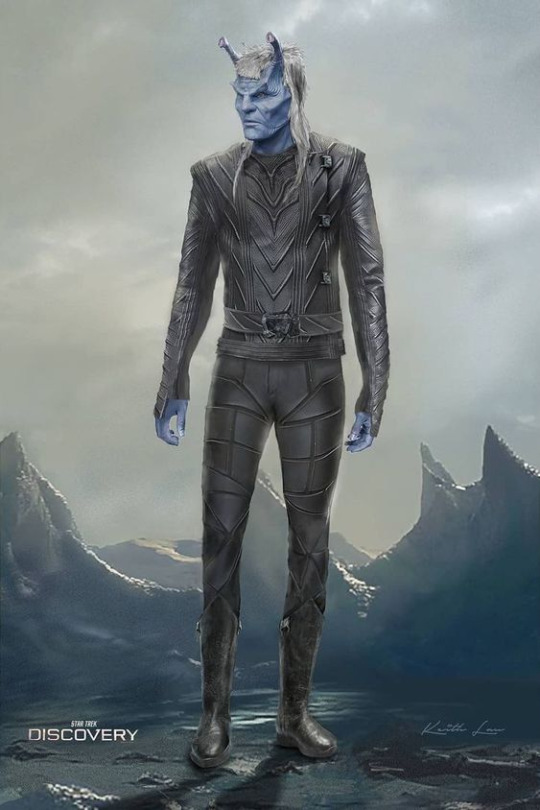
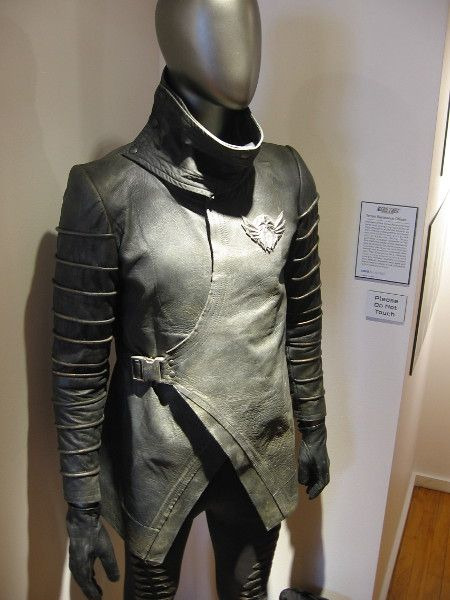
Beyond that, the only other time we see Andorians is when they're in Imperial Guard or Starfleet uniforms, which mostly just gives an overall impression of leather, suede, and future-kevlar.
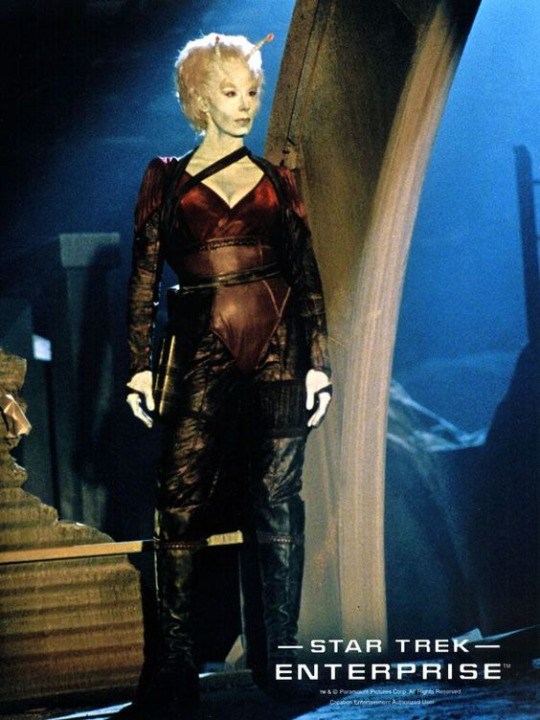


The Andorian ambassador in "Terra Prime" had a very different feel from these, of course, and that shiny outer robe ultimately inspired Thoris' official get-up.
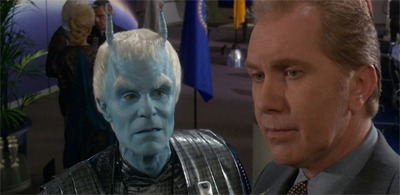


By contrast, some super early screen tests and comic book depictions for everyday Andorians look rather different, however. We've got draping fabrics, robes, tunics, some thigh high boots, and what looks like bits of armoured studding and chainmail. That's quite the departure from the other depictions!
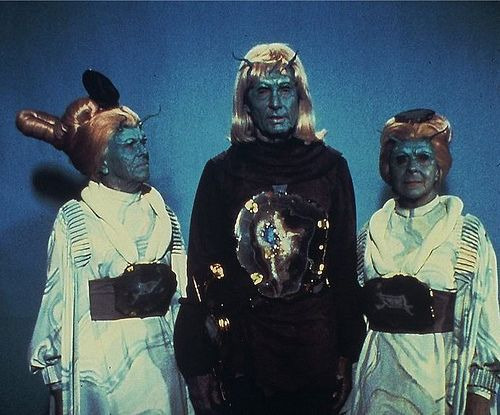
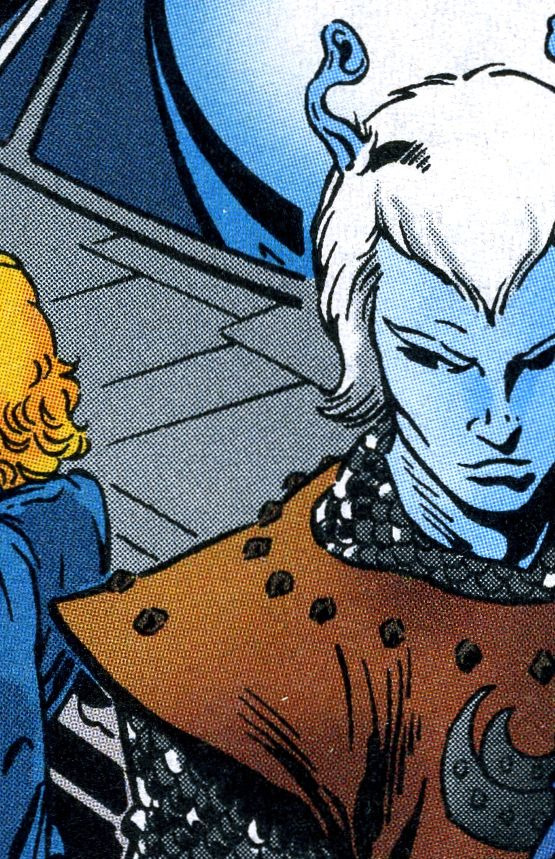

And then, of course, we have Shran's post-Imperial Guard coat. This one gets its own mention, because that coat is fabulous.

Honestly, this isn't a lot to work with. It's better than nothing, of course, but the different depictions feel very disjointed and all over the place. There's no sense of unity in the designs across the board.
So, from there I looked to real-world fashion to help me build a better idea of what I wanted my Andorians to actually look like outside of a uniform. As much as their depictions would lead us to believe that Andorians have an oddly prevalent leather kink, that's really not practical. Leather is a useful material, and certainly a heavily carnivorous population would end up with quite a lot of it, but surely that can't be everything they wear. So, I started looking around for things that felt like they fit the vague aesthetic we were given to work with.
Below are some samples from the ungodly huge pinterest board I keep for ideas and references for Andorian fashion. I think these mostly hit all the key notes for my headcanons.

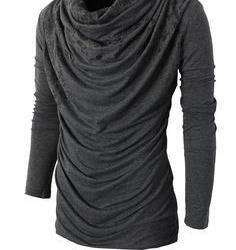
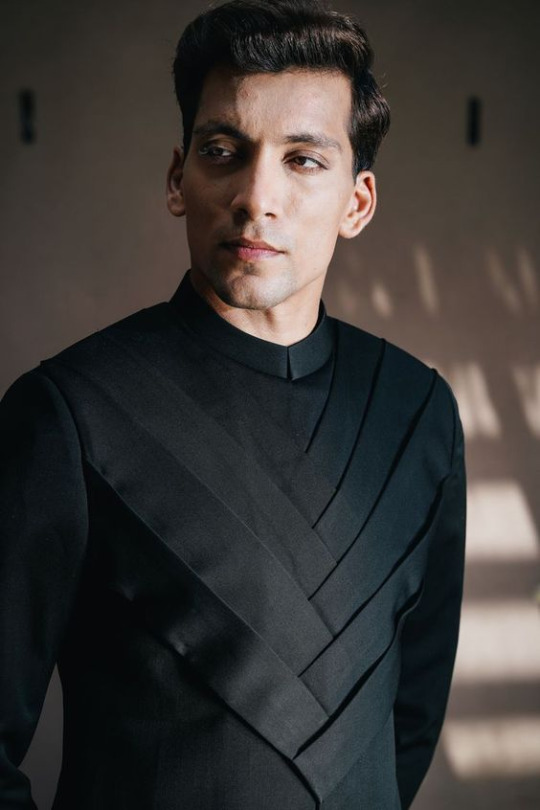
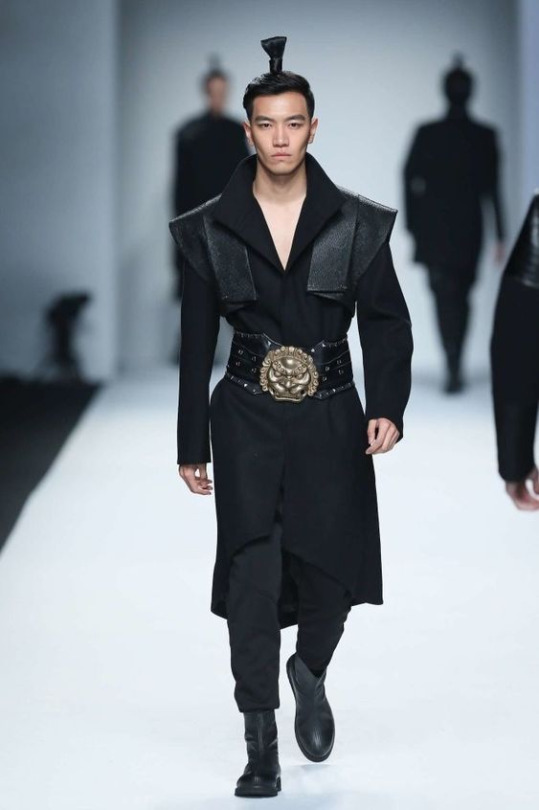
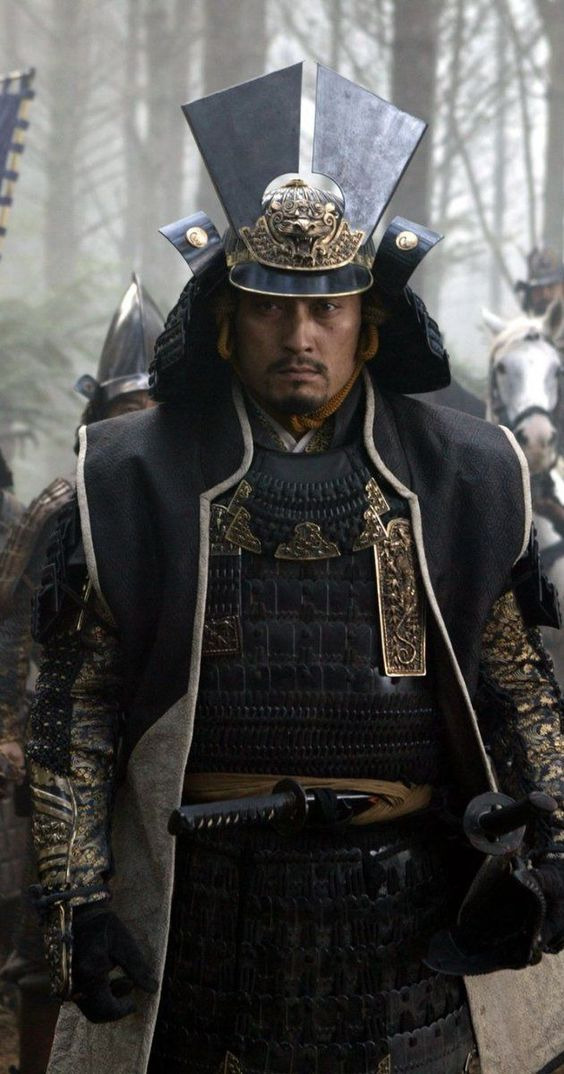
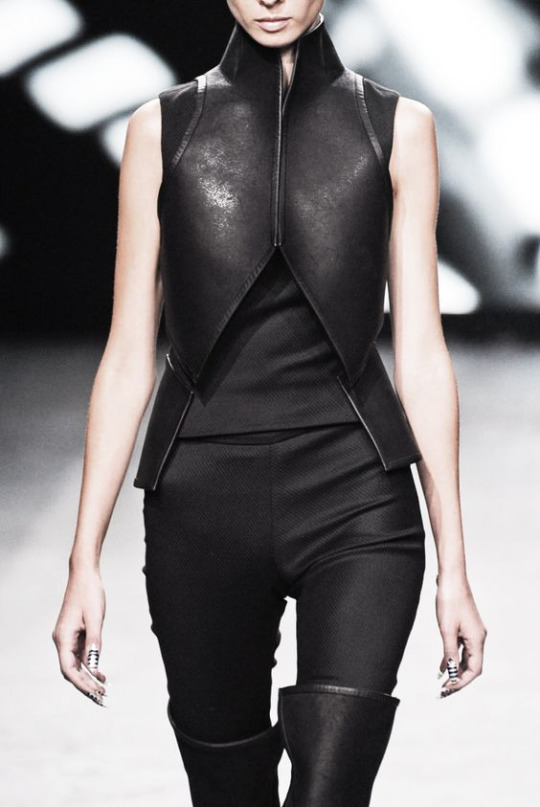
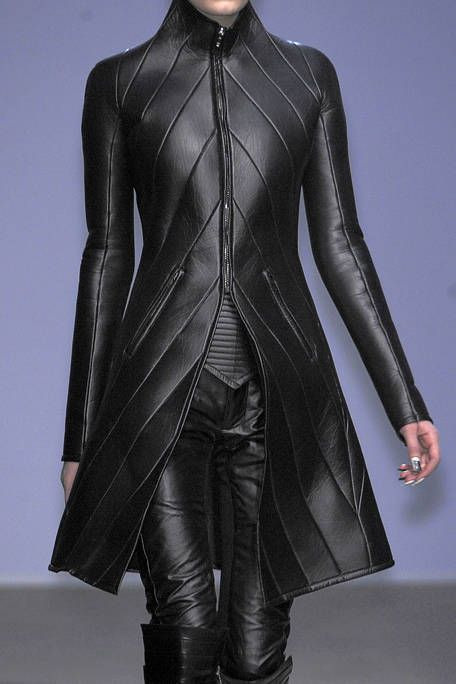
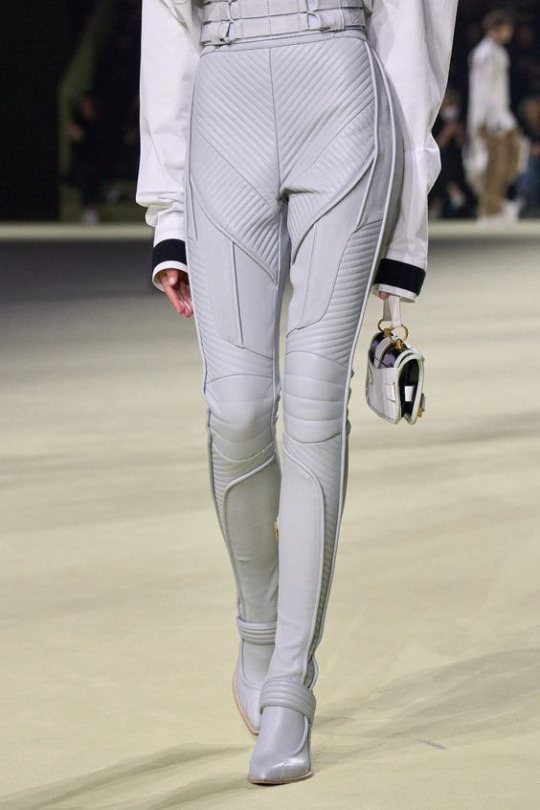
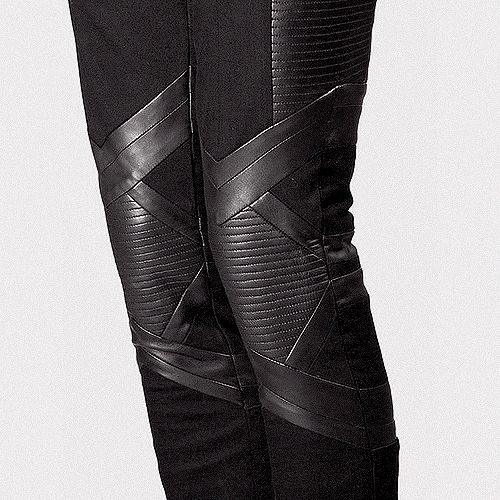

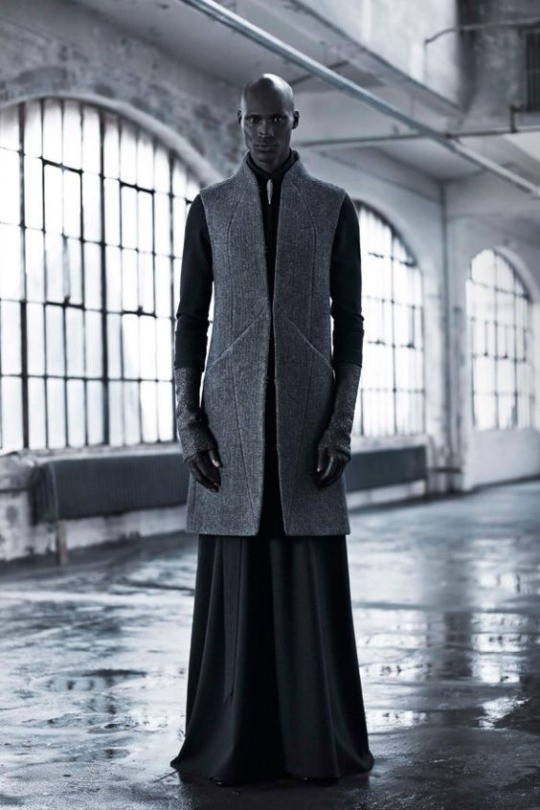
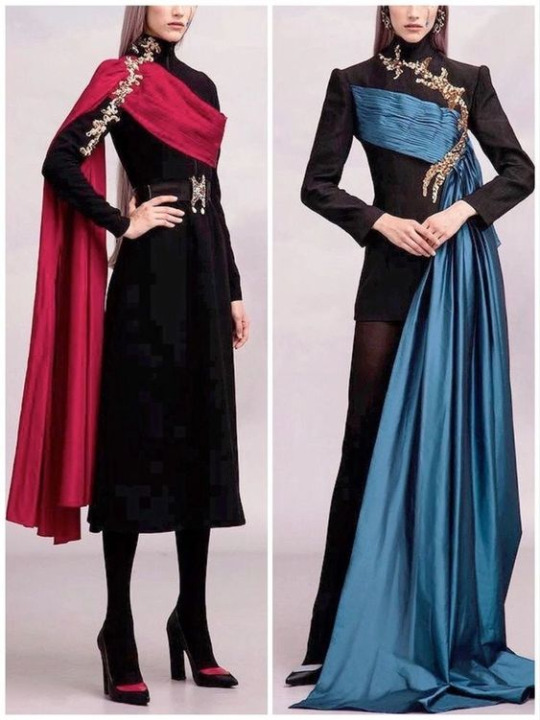
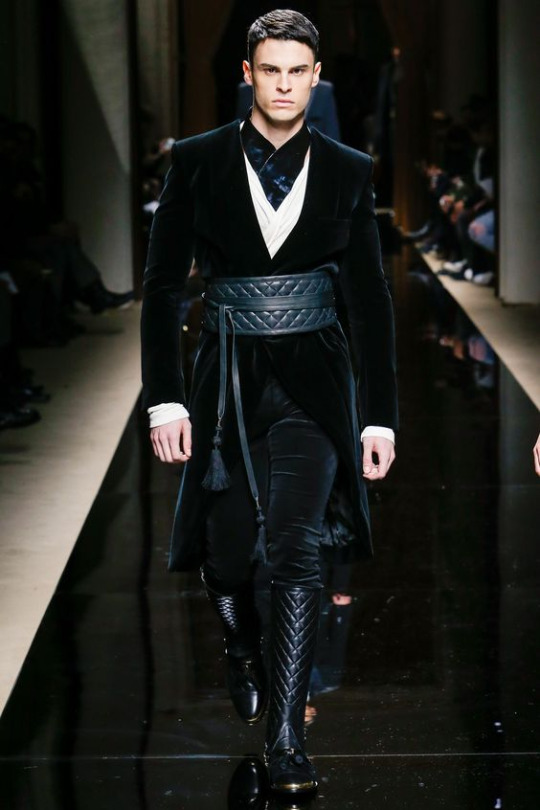

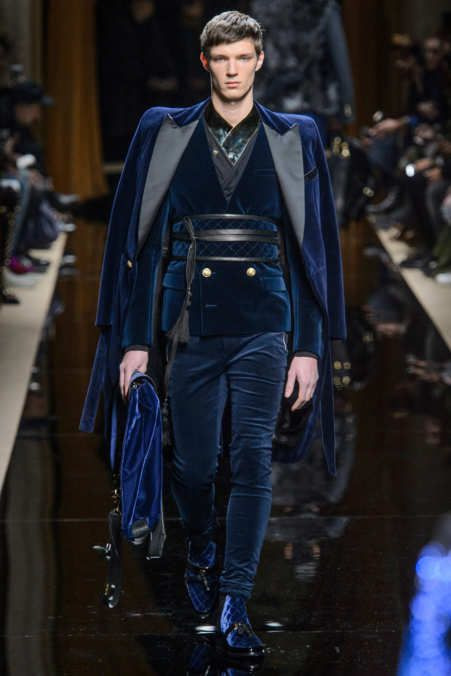
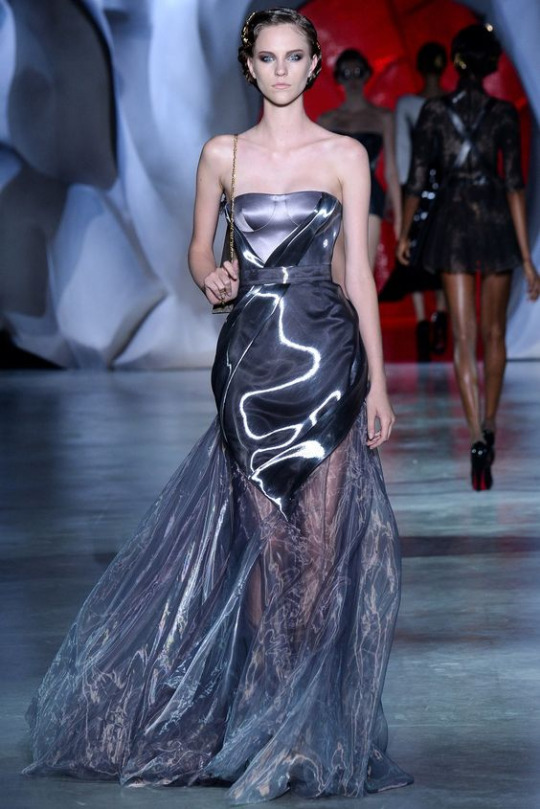
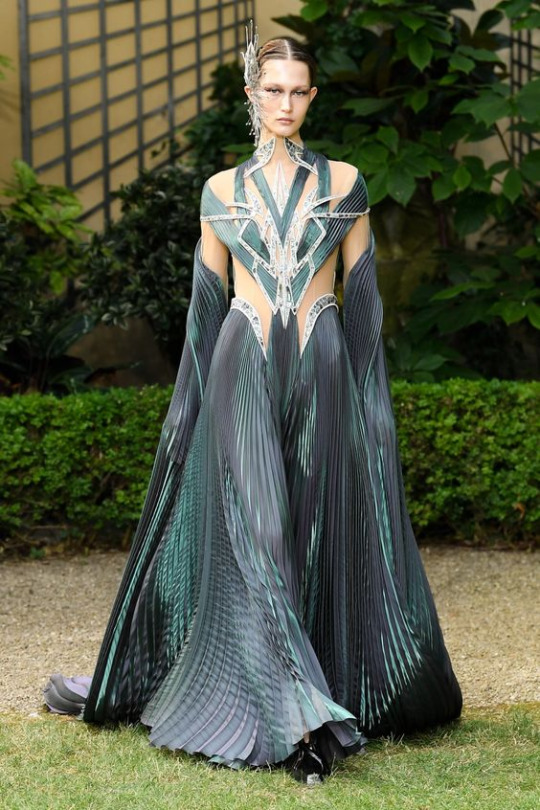

A lot of these images are very bland in terms of colour, particularly by Andorian standards, but I think you should be able to see what I've drawn inspiration from.
What I ended up with was a combination of future-fashion elements, and influences from places like Japan and India - with a heavy slant towards using leather, silk, velvet and occasionally soft, drapey fabrics. Heavy ornamentation, such as embroidery, is very common but lacework on clothing is actually quite unusual. Andorians tend to find it catches on their chitin and tears too often to be worth the fuss.
In particular, I really like the idea of layers, off-set or asymmetrical necklines, and elements of structural/architectural fashion for Andorians. Tooled leather is very popular, as well.
Another detail about Andorian fashion that I've mentioned a few times in other posts is that they like to show off their chitin patterns. Often this is done using leather as the medium, but embroidery is also a perfectly acceptable option. Often times, these articles of clothing (usually outerwear but not always) will have a Clan sigil somewhere on it as well, but it's not at all a requirement. These practices accomplish a couple of different things:
Firstly, it offers prospective playmates a tantalising 'preview' of what's underneath. Andorians are not shy about these things, nor do they understand why aliens think they should be. Some Andorians find particular types of chitin patterns very attractive, while some are averse to partners with what they perceive to be too much or too little chitin - or worse, chitin patterns that are far too similar to their own, which would suggest a shared lineage somewhere.
Secondly, it shows off Clan affiliations, especially for Clan members who were not born with their Clan's 'typical' chitin pattern. (Married individuals will often wear things that show their affiliation to both their birth Clan and their marriage Clan, as well, though these are usually ornamental items such as jewellery or hair pieces.)
Thirdly, wearing one's Clan affiliations stamped on their sleeves can sometimes serve as a conflict deterrent. Some Clans are just not worth picking a fight with, and knowing who's who ahead of time instead of after someone says something spectacularly stupid tends to save lives. Since the Unification, the need for these sorts of deterrents has dropped substantially, but it's never entirely gone from Andorian society.
This is not to say that I imagine that all Andorians wear the same things. Being able to express individual preferences is very important, especially in a society where most other individualistic pursuits are seen as counter-productive to the harmony and unity of a community.
Shral, for example, deviates from the norm by preferring dark colours and minimal ornamentation. To other Andorians, his sartorial choices are almost conspicuously bland. On the other end of the spectrum, Thelen adores vivid colours - neon oranges, shocking yellows, acid greens - and fully embraces the bombastic colour palettes his people are known for. Thoris is doomed to be trapped in billowing robes he'd much rather burn in a steel drum behind the embassy under cover of darkness, but he prefers layered tunics, boots, and breeches that don't inhibit his movement. Vrath is in the middle of the road, favouring bold colours and practical clothing but never quite able to resist bits of ornamentation that give her wealthy Tha'an Clan allegiance away. Miraal, on the other hand, adore soft, draping fabrics and wears very little leather, or any other similarly heavy materials, and she prefers to wear minimal ornamentation so as not to distract from her wares.
In terms of seasonal clothing, Andorians can tolerate very broad rangers of temperatures, and they have thermal regulators built into much of their clothing. They can get away with quite a lot, in terms of weather, but a heavily cultivated sense of caution generally prevents them from wandering out into surface conditions wearing anything less than full winter gear - though, naturally, their idea of full winter gear is rather lighter than what a Human would go in for. In extreme heat, Andorians have no problem wearing as little as possible - often to the consternation of other species who do not share their total lack of nudity taboos.
Regarding colours, I headcanon that much like how Vulcans view green as a traditional mating colour owing to the hue of their blood, and Humans view red much the same way, so too do Andorians with the colour blue. Just wearing blue alone isn't an invitation for anything, but it is very noticeable and considered a very attractive colour. Wearing a particularly fetching shade of blue while lurking in a bar and being very noticeably single, however...
Andorian silk is a luxury item, and one in high demand. Made from cocoons harvested from a domesticated relative of the infamous Andorian ice borers, it's ten times stronger than Terran silk, rendering it resistant to slashing and piercing damage. It can be woven into heavy brocades or crafted into a diaphanous, organza-like material, or blended with other fibres. It almost always has a slight iridescent or even metallic shine to it, a highly coveted property, and it is ludicrously expensive.
Hope this helps! <3
#star trek#andorian#andorians#emigre by indignantlemur#headcanon#Andorian fashion and fabrics#Andorian fashion#Andorian silk
41 notes
·
View notes
Text
At Vauxhall Gardens, [...] giant paintings were erected in the “Pillared Saloon” of seemingly geographically opposed colonial wars: one painting of The Battle of Plassey (1757), which secured Bengal for the British East India Company, hung next to another symmetrical work that portrayed the British capture of Montreal and, later, Canada itself. That these and other sizable aesthetic works were “designed to be an immersive virtual-reality experience” testifies to Cohen’s larger claim in The Global Indies that 18th-century fashion, rank, sociability, and class were intimately bound up with race and colonialism, particularly through the period’s joint imaginary of the “Indies.”
The Indies describes a shared fantasy - and unquestionable material reality - of wealth accumulation that yoked together the “West” (the Caribbean and North America) and “East” (the Indian subcontinent) Indies in late 18th-century British culture, a conceptual proximity so thorough and unrelenting that its effects reverberate [today] throughout the contemporary [...].
---
The prelude to Ashley L. Cohen’s The Global Indies opens in a pleasure garden - not just any such garden, but the largest and most spectacular of these 18th-century sites of fashionable culture [...]: London’s Vauxhall Garden. At Vauxhall, Londoners who could afford the entrance fee were treated to an array of wonders and excesses. A well-known chapter entitled “Vauxhall” in William Makepeace Thackeray’s Vanity Fair (1847–’48), for example, finds Jos Sedley, an “indolent” officer of the East India Company recently returned to London, drunk off the garden’s signature "rack punch.” “Everybody had rack punch at Vauxhall,” [...]. Lest a reader mistake punch for a mere artifact of the pleasure garden or a one-off comedic incident, “that bowl of rack punch was the cause of all this history,” the narrator stresses about his unfolding novel. [...] Punch, an alcoholic drink popular with colonial officers of the East India Company, was usually made with a combination of five ingredients including sugar cane and spices, and probably derives from the Sanskrit word “pancha,” meaning five (and invites an etymological link with the Persian panj and with Bengali five-spice mix, panch phoreen). Rack punch’s association with Vauxhall, with India, and with Vanity Fair’s narrative construction was hardly a stretch for Thackeray’s Victorian readers, and probably registered as quite natural, though it carried more than a whiff of the unseemly. But then again, to 18th-century Britons, “natural and a little unseemly” could easily describe the “worldwide empire that stretched from the East to the West Indies” [...].
---
It’s tricky business to think seriously inside of the 18th-century’s analytic tools, but The Global Indies pulls it off, not least because Cohen is appropriately blunt [...], reminding readers of the everyday racism of the Georgians and their fashionable sociability. The book benefits, too, from a rich body of existing work [...] [by] scholars like Edward Said and Srinivaas Aravamudan. [...] [T]he “Indies mentality” enters a critical landscape that has lately taken up the connections between geographically far-flung events in modernity: North American settler colonialism, Atlantic slavery, colonialism in India, and the migration of Chinese and South Asian indentured labor.
Lest these all seem like separate histories that have produced separate discursive notions of race, critics like Lisa Lowe, Jodi Byrd, Tao Leigh Goffe, and now Cohen assure us that they are not, and that our modern ideas about race are intimately shaped by the interconnected and forced movements of Black and brown people across the world. [...]
Cohen spells out how British liberal reformers and abolitionists found a solution to ending West Indian slavery in the continuation of so-called “free” wage labor in Bengal. Sugar produced by Bengali peasants laboring under the threat of starvation came to replace sugar produced on West Indian plantations well into the 19th and 20th centuries. One only has to look up the multiple Bengal famines (1769–1770, and 1943) to calculate its effects. [...]
[T]he architects of the [American transcontinental] railroad “imagined a new era of US hegemony in a mold cast by the imaginative geographies of British imperialism.”
---
All text above by: Ronjaunee Chatterjee. “The Colonial Mentality, Past and Present.” LA Review of Books. 3 September 2021. Published online at: lareviewofbooks.org/article/the-colonial-mentality-past-and-present/ [Bold emphasis and some paragraph breaks/contractions added by me. Presented here for commentary, teaching, criticism purposes.]
#abolition#colonial#imperial#ecology#forests#plantation#tidalectics#archipelagic thinking#global indies#intimacies of four continents#multispecies#plantation afterlives
66 notes
·
View notes
Text
Benefits of Wearing a Saree
The saree is more than just a piece of clothing; it is a symbol of grace, tradition, and versatility that has stood the test of time.
Spanning centuries and cultures, this quintessential Indian garment has evolved into a fashion statement worldwide.
Whether adorned by grandmothers at traditional ceremonies or flaunted by millennials at glamorous events, the saree continues to hold its place as an iconic piece of attire.
But beyond its aesthetic appeal, there are numerous benefits to wearing a saree. Let us explore the advantages that make this attire truly exceptional.

1. Timeless Elegance and Versatility
One of the most significant benefits of wearing a saree is its unmatched elegance.
A saree effortlessly combines traditional charm with contemporary style. Available in countless fabrics, designs, and colors, it caters to every occasion—be it a wedding, a casual gathering, or a professional meeting.
The versatility of a saree lies in its adaptability; you can drape it differently to achieve various looks.
From the classic Nivi style to the regal Bengali drape, each method of wearing a saree imparts a unique aesthetic.
2. Celebration of Cultural Heritage
Wearing a saree is a beautiful way to honor and preserve cultural heritage.
Every region in India has its distinct style of saree, such as the Banarasi silk from Uttar Pradesh, Kanjeevaram from Tamil Nadu, and Chanderi from Madhya Pradesh. Each type reflects the artistry, craftsmanship, and history of its place of origin. By wearing sarees, we not only connect with our roots but also contribute to keeping age-old traditions alive.
3. Flattering for All Body Types
The saree is one of the few garments that suit every body type. Its fluid and adjustable nature allows it to drape seamlessly over any figure, enhancing the wearer’s natural beauty.
Whether you have a petite frame or a curvaceous body, a saree can be styled to highlight your best features. Unlike western attire, which often adheres to rigid sizing standards, a saree embraces individuality, offering a custom fit every time.
4. Promotes Handcrafted Textiles and Sustainable Fashion
In an age dominated by fast fashion, sarees stand out as sustainable and eco-friendly clothing.
Many sarees are handcrafted using natural fibers like cotton and silk, supporting local artisans and weavers.
By choosing handwoven sarees, you contribute to sustainable fashion practices and help preserve traditional craftsmanship.
Additionally, sarees are durable and timeless, reducing the need for frequent replacements, which is a hallmark of environmentally conscious fashion.
if you want to buy best saree visit here: silver squre
5. Boosts Confidence and Poise
There’s something about wearing a saree that instantly elevates one’s confidence.
The graceful drape and flowing pleats lend an air of sophistication and poise to the wearer.
It is no wonder that women often choose sarees for milestone events like weddings, graduation ceremonies, and award functions.
The saree’s ability to make the wearer feel elegant and powerful is unmatched.
6. Enhances Femininity
The saree is synonymous with femininity. Its design accentuates curves while maintaining a sense of modesty, making it a perfect blend of sensuality and sophistication.
Accessories like bangles, jhumkas, and necklaces further enhance the look, allowing women to embrace and celebrate their feminine side.
7. Comfort and Breathability
Contrary to popular belief, sarees can be incredibly comfortable to wear, especially when made from breathable fabrics like cotton or linen.
During hot summers, light cotton sarees provide excellent ventilation, keeping the wearer cool. Similarly, silk and woolen sarees offer warmth during colder months.
Unlike fitted western outfits, sarees offer ease of movement and comfort, making them suitable for long hours of wear.
8. Expression of Individuality
A saree allows endless opportunities for personalization and self-expression. From choosing the fabric and color to pairing it with unique blouses and accessories, a saree reflects the wearer’s personality.
Modern interpretations of the saree include pairing it with crop tops, jackets, or even sneakers, proving that it is not bound by conventional styling rules.
9. Universal Appeal Across Generations
The saree transcends age barriers. It is as relevant to a young woman attending her first college cultural event as it is to an elderly lady gracing a family function.
This universal appeal ensures that the saree remains a staple in every Indian wardrobe. Additionally, its ability to adapt to changing fashion trends while retaining its essence makes it a beloved choice across generations.
10. Practical and Long-Lasting
A saree, if cared for properly, can last for decades, often becoming a family heirloom passed down through generations. Its longevity and timeless appeal make it a practical investment.
Moreover, sarees are easy to store and require minimal maintenance, especially those made from durable fabrics like cotton and silk.
Conclusion
Wearing a saree is more than a fashion choice; it is an experience that connects you to culture, tradition, and individuality.
Its elegance, versatility, and sustainability make it a garment like no other. Whether you are attending a formal event, celebrating a festival, or simply embracing your heritage, a saree is a perfect choice.
By draping a saree, you don’t just wear a piece of fabric; you carry forward a legacy of art, grace, and timeless beauty. So, the next time you open your wardrobe, consider the saree—a garment that’s as multifaceted as the women who wear it.
2 notes
·
View notes
Text
Embroidery: A Timeless Craft with Modern Appeal
Embroidery is an age-old art form that continues to thrive today, transcending generations and geographical boundaries. This intricate craft involves decorating fabric with needle and thread, resulting in stunning patterns and designs that can be both practical and decorative. Whether it's embellishing clothing, home decor, or accessories, embroidery serves as a bridge between tradition and contemporary style. In this article, we'll explore the fascinating history, types, tools, techniques, and modern applications of embroidery.
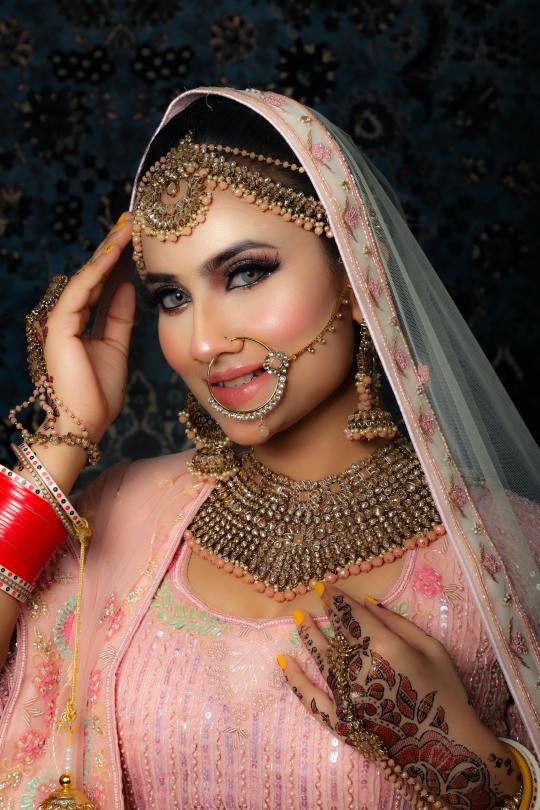
The Historical Roots of Embroidery
To fully appreciate embroidery, it’s essential to understand its historical context. Originating thousands of years ago, embroidery can be traced back to ancient civilizations such as Egypt, China, and India. In these cultures, the craft was not only a form of decoration but also a symbol of social status. Elaborate embroidered garments and tapestries adorned royalty and were often passed down as valuable heirlooms.
Over time, embroidery techniques spread across Europe, where it became a popular pastime among noblewomen. This period gave rise to some of the most famous embroidery styles, such as French Rococo and English crewel work. Additionally, the Industrial Revolution brought changes to embroidery, transforming it from a labor-intensive handmade art into a more accessible craft with the invention of the embroidery machine.
Types of Embroidery: Traditional vs. Modern
While embroidery has a rich historical background, it has evolved significantly over time. Today, it encompasses a wide range of styles, techniques, and materials, making it accessible to various skill levels and preferences. Understanding the difference between traditional and modern embroidery is key to appreciating its versatility.
Traditional Embroidery
Traditional embroidery refers to techniques that have been passed down through generations, often rooted in specific cultural practices. Some well-known types include:
Cross-stitch: One of the oldest and most basic forms, cross-stitch involves creating X-shaped stitches to form patterns.
Blackwork: Originating in England during the Tudor period, blackwork is characterized by black thread on white fabric, typically featuring geometric patterns or florals.
Crewel Embroidery: Using wool thread on linen or cotton, crewel embroidery often depicts natural themes such as flowers, birds, and animals.
Sashiko: This Japanese technique, meaning "little stabs," involves simple running stitches to form geometric patterns, originally used for mending clothing.
Each of these techniques has deep cultural significance and relies on specialized tools and materials to create intricate designs.
Modern Embroidery
Conversely, modern embroidery tends to focus on creative expression and often incorporates non-traditional materials and techniques. It can blend styles, integrate mixed media, or even include 3D elements. Some key examples are:
Machine Embroidery: As the name suggests, this technique uses a sewing machine to create embroidery designs quickly and efficiently. It’s popular in the fashion and textile industries.
Freehand Embroidery: This style allows for more freedom and creativity, as the artist uses various stitches to create a one-of-a-kind design, often without following a strict pattern.
Thread Painting: Also known as needle painting, this technique uses long and short stitches to blend colors, much like brushstrokes on a canvas.
Embroidery with Mixed Media: Incorporating elements such as beads, sequins, and even paint, this contemporary style pushes the boundaries of traditional embroidery, creating textured and layered designs.
Essential Tools and Materials for Embroidery
Embroidery, while highly intricate, requires relatively few tools to get started. These basic tools, however, can vary slightly depending on the type of embroidery you plan to do.
Needles
The needle is, unsurprisingly, the most important tool for any embroidery project. Needles come in various sizes and shapes depending on the type of fabric and thread being used. For example:
Crewel needles: Have a long eye and a sharp point, perfect for wool embroidery.
Tapestry needles: Have a blunt point and are best for counted thread techniques like cross-stitch or needlepoint.
Chenille needles: Similar to crewel needles but with a larger eye, ideal for thick threads or ribbons.
Threads
Equally important to the needle is the thread. While silk and cotton are traditional choices, modern embroiderers often use synthetic threads, metallic threads, or even wool. Some popular thread types include:
Embroidery floss: Made of six easily divisible strands, embroidery floss is the most versatile and widely used thread.
Perle cotton: A non-divisible, thicker thread that adds texture and depth to designs.
Silk thread: Known for its shine and smooth texture, silk thread is luxurious but can be more challenging to work with.
Fabric
The fabric serves as the canvas for embroidery, and the choice of fabric can significantly impact the outcome of your project. Some common options include:
Cotton: Ideal for beginners, cotton is easy to work with and versatile.
Linen: Known for its durability and smooth texture, linen is often used for fine, detailed work.
Aida cloth: A stiff fabric with an even weave, Aida is the go-to choice for cross-stitch.
Hoops and Frames
Embroidery hoops and frames are used to keep the fabric taut while stitching, ensuring clean, precise work. Hoops come in various sizes and are typically made of wood, plastic, or metal. For larger or more complex projects, an embroidery frame may be more suitable.
Techniques for Mastering Embroidery
Once you have your tools ready, it’s time to explore the wide array of stitches that bring embroidery to life. While there are hundreds of stitches, here are a few of the most commonly used:
Running Stitch
The running stitch is one of the most basic stitches and is used in many forms of embroidery, including Sashiko and kantha quilting. This simple stitch creates a dashed line and is perfect for outlining designs.
Satin Stitch
For solid, filled areas, the satin stitch is ideal. By laying the thread close together in smooth rows, you can create shiny, raised areas in your design. It’s often used for filling in shapes like leaves or flower petals.
French Knot
The French knot is a decorative stitch used to add texture and dimension to your embroidery. It involves twisting the thread around the needle and pulling it tight to create a small, raised knot on the surface of the fabric.
Backstitch
Backstitch is excellent for outlining and adding fine details. It creates a continuous, unbroken line and is often used in lettering or to outline shapes.
The Modern Renaissance of Embroidery
Interestingly, embroidery is experiencing a modern renaissance. With the rise of DIY culture and the push for sustainable fashion, many people are turning to embroidery as a way to customize or upcycle clothing and home textiles. Moreover, social media platforms like Instagram and Pinterest have become hubs for embroidery inspiration, showcasing the creativity of artists from around the world.
Embroidery kits, designed for beginners and hobbyists, are more popular than ever, offering an easy entry point for those interested in learning the craft. Meanwhile, contemporary designers are embracing embroidery in haute couture and ready-to-wear fashion, creating pieces that blend tradition with innovation.
Embroidery as a Form of Mindfulness
In addition to its artistic appeal, embroidery has also become a popular form of mindfulness practice. The repetitive nature of stitching can help to calm the mind, reduce stress, and promote focus. In a world that often feels fast-paced and overwhelming, many individuals find solace in the slow, deliberate process of creating something beautiful with their hands.
Conclusion: Embroidery's Timeless Charm
Embroidery has come a long way from its ancient origins, yet its charm remains timeless. Whether you're drawn to traditional techniques or prefer to experiment with modern styles, embroidery offers endless possibilities for creative expression. From the soothing rhythm of the stitches to the intricate designs that emerge, this craft is a testament to patience, skill, and the enduring power of handmade art.
In a world increasingly driven by technology and fast fashion, embroidery serves as a reminder of the value of time, effort, and craftsmanship. Whether you’re a seasoned embroiderer or a curious beginner, there’s never been a better time to explore this captivating craft.
More information...
2 notes
·
View notes
Text
The Leading Fashion Designers of India: Icons Shaping the Indian Fashion Landscape
India’s fashion scene is as diverse and colorful as its culture. Over the years, Indian designers have earned worldwide acclaim for their unique blend of traditional craftsmanship and contemporary designs. Whether it's exquisite bridal wear or cutting-edge runway collections, these designers are creating a significant impact on both the domestic and international fashion stages. Here's a look at the most popular and influential top designers of India today.
1. Sabyasachi Mukherjee: The King of Bridal Couture
When it comes to Indian bridal wear, Sabyasachi Mukherjee is often the first name that comes to mind. His brand is synonymous with opulence, tradition, and grandeur. Sabyasachi’s design aesthetic celebrates India’s rich cultural heritage, merging it with modern sensibilities. Known for his detailed embroidery, luxurious fabrics, and vintage-inspired motifs, his work often features a signature palette of deep reds, rich golds, and earthy tones.
Sabyasachi’s collections often draw inspiration from Indian art, architecture, and folklore. His bridal lehengas, saris, and anarkalis have become coveted pieces for brides, not just in India but globally. He has dressed numerous Bollywood celebrities, including Deepika Padukone, Priyanka Chopra, and Anushka Sharma, as well as international stars. His collaborations with global brands like Christian Louboutin have solidified his standing as a global fashion icon.
2. Manish Malhotra: Bollywood's Favorite Designer
Manish Malhotra is the quintessential Bollywood designer, having styled some of the biggest names in Indian cinema. Known for his glamorous and elaborate creations, Manish has defined red-carpet style for Bollywood’s elite. He is famous for his larger-than-life fashion shows, where Bollywood celebrities frequently walk the ramp showcasing his dazzling designs.
Manish’s style is characterized by vibrant colors, intricate embroidery, and luxurious fabrics. His bridal collections are highly sought-after, featuring stunning lehengas, saris, and gowns that combine traditional Indian craftsmanship with contemporary silhouettes. Beyond bridal wear, Manish has also made his mark in couture and prêt-à-porter, with designs that appeal to both traditional and modern sensibilities.
In recent years, he has also expanded his brand into makeup and bridal jewelry, making him a one-stop-shop for brides. His dedication to the craft and his influence on Bollywood fashion have made him one of the most recognized designers in India.
3. Ritu Kumar: The Pioneer of Indian Fashion
Ritu Kumar is considered one of the pioneers of Indian fashion. With a career spanning over five decades, she has played a key role in reviving traditional Indian textiles and crafts. Her designs are known for their elegance, blending Indian motifs and handwork with contemporary styles. Ritu's collections are rich in heritage and history, often featuring block prints, zari work, and intricate embroidery.
Ritu Kumar’s work has been instrumental in promoting Indian craftsmanship on the global stage. She has a loyal following not only in India but internationally, with stores in several countries. Her ability to modernize Indian textiles like silk, cotton, and khadi while staying true to their roots has made her a beloved name in Indian fashion.
Her label, which started as a small boutique in Kolkata, has grown into one of the most successful fashion brands in India. From bridal wear to prêt-à-porter, Ritu Kumar’s versatility and commitment to Indian craftsmanship continue to inspire the next generation of designers.
4. Tarun Tahiliani: The Master of Draping
Tarun Tahiliani is celebrated for his ability to fuse Indian traditions with Western styles. His designs are known for their impeccable draping, luxurious fabrics, and intricate embroidery. A graduate of the Fashion Institute of Technology (FIT) in New York, Tarun brings a global perspective to his designs while maintaining a strong connection to Indian heritage.
Tahiliani’s bridal wear is a favorite among Indian brides who want a perfect blend of tradition and modernity. His signature style includes the use of Swarovski crystals, intricate beadwork, and lavish fabrics like silk, velvet, and chiffon. Apart from bridal couture, Tarun is known for his ready-to-wear collections that feature structured silhouettes, detailed embellishments, and contemporary cuts.
He is also a founding member of Ensemble, India’s first multi-designer store, which played a significant role in promoting Indian designers. His ability to balance craftsmanship with innovation has made him one of India’s most respected designers.
5. Anamika Khanna: The Queen of Contemporary Indian Fashion
Anamika Khanna is one of the few Indian designers who has successfully merged Indian traditional aesthetics with modern global trends. Her designs are a blend of Indian textiles and contemporary silhouettes, often pushing the boundaries of conventional fashion. Known for her signature draped saris, capes, and floor-length jackets, Anamika’s collections reflect a deep understanding of Indian crafts combined with avant-garde innovation.
Anamika Khanna became the first Indian designer to present her collection at Paris Fashion Week, marking a milestone in Indian fashion. She is also known for her love of fusion wear, using traditional Indian techniques like zardozi and chikankari in unconventional ways. Her designs are a favorite among Bollywood stars like Sonam Kapoor and Kareena Kapoor Khan, who frequently don her creations on the red carpet.
Her ability to seamlessly blend tradition with modernity has earned her a loyal following among fashion-forward individuals both in India and abroad.
6. Abu Jani and Sandeep Khosla: Masters of Opulence
Abu Jani and Sandeep Khosla are known for their ultra-glamorous and intricately detailed designs. Their label, Abu Jani Sandeep Khosla, has become a go-to for high-society weddings and celebrity red-carpet events. The duo is celebrated for their mastery of traditional Indian techniques, including zardozi, chikankari, and mirror work, which they combine with contemporary silhouettes to create show-stopping outfits.
Their designs often feature luxurious fabrics like silk, velvet, and organza, adorned with lavish embellishments. Whether it’s a bridal lehenga, anarkali, or an elaborate gown, Abu Jani and Sandeep Khosla are known for their attention to detail and artistic vision. They have dressed international celebrities like Beyoncé and Judi Dench, alongside Bollywood royalty like Amitabh Bachchan and Deepika Padukone.
Their opulent designs, combined with a flair for storytelling through fashion, have earned them a prominent place in India’s fashion industry.
7. Masaba Gupta: The Face of Quirky and Fun Fashion
Masaba Gupta has become a household name for her bold, quirky, and unconventional designs. Daughter of actress Neena Gupta and cricketer Vivian Richards, Masaba brings a unique perspective to Indian fashion. Her designs are known for their vibrant colors, bold prints, and playful motifs, often drawing inspiration from art, nature, and popular culture.
Masaba's label, House of Masaba, is one of India’s most popular prêt-à-porter brands. She has successfully redefined traditional Indian wear, especially the sari, by giving it a modern twist with eclectic prints and contemporary draping styles. Her ability to make traditional Indian fashion accessible to younger generations has earned her a strong following among millennials.
Her designs are perfect for those who love to make a statement with their clothing, and her collaborations with global brands have only increased her reach.
Conclusion
The Indian fashion industry is as diverse and dynamic as the country itself. From traditional bridal couture to contemporary fusion wear, India’s leading designers are constantly pushing the boundaries of creativity and innovation. Designers like Sabyasachi Mukherjee, Manish Malhotra, Ritu Kumar, Tarun Tahiliani, Anamika Khanna, Abu Jani-Sandeep Khosla, and Masaba Gupta have not only shaped Indian fashion but have also taken it to global platforms, making India a significant player in the world of fashion. Their designs are a celebration of India's cultural heritage, artistic traditions, and modern influences, making them icons in the world of fashion.
0 notes
Text
Western Fashion's Effect on Indian Culture

Numerous social and cultural developments, including modernism, technological growth, and creative movements, have an impact on fashion and lifestyle trends in today's society and culture. Examples of this include technological advancement, modernization, and artistic movements. Their activities have had far-reaching effects on the rest of the world as a result of the events. Fashion is modeled after consumer lives and cultural contexts, according to a paradigm for fashion study and interpretation that takes into account the interplay of changes in fashion, changes in consumer lifestyles, and changes in cultural surroundings. The rest of this definition makes use of the interactionist paradigm. Because it places a strong focus on interpersonal contact, it is also known as the interactionist model or interactionist framework.
The philosopher asserted that the only thing that remains constant in the universe is change, calling it "the only thing that is constant." He declared, "Change is the only thing that is constant." In other words, fashion is nothing more than a passing craze that is meant to be transient and is always changing and appearing. Throughout history, creative minds have made their mark on the fashion industry by employing a range of unique and inventive methods. Regardless of the activity they are involved in, everyone wants to always feel and look their best. This is true regardless of their career. This holds true regardless of their experience in the workplace. Regardless of their prior employment history, this is accurate. Whether or not they have previous work experience, this is still true.
One of the oldest and most prosperous civilizations in the world, Indian culture is said to be seriously threatened by the current condition of affairs and may not survive in the future. The UN claims that the world would be in severe danger if Indian culture, which has endured for thousands of years, disappeared. Despite the fact that Indian culture is under threat in various ways, one of the biggest is the development of Western civilization, which is gradually taking over the country and destroying the customs of its indigenous peoples. Everyone acknowledges that western culture is flexible and has instilled in us the value of independence in our daily lives, However, this does not mean that we should abandon our customs and slavishly adhere to the legal systems of other people. Others contend that our long-standing practice of accepting novel concepts from other nations shouldn't be interpreted as a warning sign that we could soon lose our moral convictions. India has seen changes in its design patterns over time due to a multitude of factors, including the country's historical Islamic conquest, western colonization, and influx of international traders.
Western fashion's effects on Indian culture:-
As was previously mentioned, India is a melting pot of cultural diversity, which has made Indians hospitable to individuals from a wide range of ethnic backgrounds. Multiple ethnic groups cohabit regularly in a nation, and each group learns about the customs and languages of the others. Intercultural learning, to put it simply, is the process by which people become aware of one another's languages and cultures. It is a long-observed occurrence that bears the following definition: Every ethnic group has its own distinct style when it comes to attire, therefore for those who are unaware with it, meeting someone from a different ethnic group for the first time can be a fascinating experience. The fashion industry in India inspires women to choose more creative and daring looks for themselves. Indian fashion designers have achieved the highest degrees of inventiveness and international recognition in recent years due to their ability to blend several styles into their designs. It has allowed them to gain recognition on a global scale.
Western-style fashion is gaining popularity among consumers of all ages and socioeconomic backgrounds, and it's one of the retail company sectors that is expanding the fastest in the last few years. In addition, it is among the least expensive choices on the market. History reveals that the American Old West region, which emerged in the seventeenth century, is where traditional western clothing originated. The foundation of this brand, which is available for online purchase by both men and women, is made-to-order basics like t-shirts, jeans, and jackets. Due to the company's expansion and the enormous increase in diversity that has taken place since its founding, clients may now choose from a wide range of commodities and fashion trends. Over time, the notion of western clothes has expanded to include a diverse array of goods, including but not limited to casual t-shirts, pants, dresses, skirts, and suits. Western attire comprises of things such as dresses, skirts, suits, pants, and casual tee shirts. The category of western clothes encompasses things such as dresses, skirts, suits, pants, and casual t-shirts. The following clothing items are included in the category of western apparel: dresses, skirts, suits, pants, and casual tee shirts. "Western wear" is another term for apparel from the West. Traditionally, western attire has been associated with items such as dresses, skirts, suits, pants, and casual tee shirts. People of different ethnic backgrounds and origins find comfort, durability, and variety in clothing that appeals to them.
For a very long time, customers in India did not anticipate women working physically because it was not seen as normal. This has, however, lately altered. But things are starting to change here. But things have shifted a lot in the last few years. If you look closely at the pictures, you'll notice that the women's traditional Indian attire was completely unfit for someone participating in a physically demanding exercise. It is therefore more difficult for women to move freely within the culture in which they live when they wear in traditional attire. A woman's body is covered in a long length of cloth, called a saree, from her waist to her toes. As was already said, because the legs are not completely straight, their range of motion is limited. This causes it to feel uncomfortable when it comes into contact with surrounding female body parts.
Additionally, moving huge articles of clothes, such as sarees and lehengas, from one area to another may be time-consuming and difficult. Unless the labor is of a specific kind, there are no hard and fast rules to follow, and even then, the criteria may vary depending on how heavy the garments are, to begin with. Weight-wise, bridal lehengas are much more severe than regular lehengas and saris, both popular choices for Indian brides.
Conversely, women feel far more at ease in western apparel, such as jeans, perhaps because of the way they are made. These clothes are significantly more comfortable than traditional Indian clothing. The loose fit of western clothing facilitates women's respiration and movement, enabling them to be more active in daily life.
CONCLUSION:-
Since more and more Indian females start dressing largely in Western clothing, it is expected that this trend would continue. The variety of clothing styles is increasing, and they can be seen in anything from shirts and pants to T-shirts and skirt sets and other similar-looking products. People can choose from a comprehensive collection of costumes in a wide range of color options to suit their specific likes and hobbies. Wearing western attire gives you a more polished and appealing appearance while you are out and about in public. Sadly, there is no escaping this fact of reality.
Just as Western attire might be lovely in some circumstances, ethnic dress can also be magnificent in others. Though it may be attractive in some scenarios. Consumers may frequently dress in formal and casual settings with stylish, classic apparel. It fits in with both settings and events. Women can choose from a variety of ethnic clothing options, including sarees, salwar kameez, lehengas, churidars, and other styles that can be customized to complement their entire appearance, if they prefer a more traditional look. Muslim women in southern India have historically worn salwar kameez, while Hindu ladies in northern India have traditionally worn sarees.
To go with your ensembles, you may also buy saree fabrics in a variety of colors and patterns. There are saris made of georgette, chiffon, and cotton and silk, among other materials. Bridal lehengas and shararas are beautiful garments worn for formal occasions like weddings and other social gatherings in many cultures, including Indian culture. This is especially true for Indian women who are getting married. No matter where it originates, clothing has a distinct style, whether it is western or ethnic. On the other hand, some women believe that dressing in ethnic attire makes them more comfortable than dressing in western attire.
Conversely, some claim. They feel more at ease dressed in Western apparel than in traditional attire. In this instance, it would be ridiculous to try to persuade someone that one is better than the other. Though most of the time an individual's attire is determined by the event to which they have been invited, this is not always the case. For instance, what to wear to a wedding depends on the color of the gown. Nonetheless, the average member of our society finds it impossible to understand the history and customs of our nation when viewed through the prism of western attire and culture.
#ladiessuits#ladieswear#onlinetailoring#stitching#tailoring#fashionstyle#ladiesfashion#tailor#tailors#ladiestailor
2 notes
·
View notes
Text
Buy Black Light Weight Denim For Women Online in India

Shop Black Light Weight Denim For Women Online From Canoetrends in India. For everyday wear, the Women's Black Light Weight Denim from our online store is the ideal option. These lightweight denim jeans are airy and perfect for warm weather because of their light weight denim construction. It's been a while since I've done this, but I have a feeling that I'm going to have to do it again. For a chic, relaxed style, combine them with a laid-back blouse or shirt.
#Mens designer clothes Online in India#Casual Jacket for men online in India#Trendy casual shirts#Branded showrooms near me#Clothing brands showroom near me#Casual Blazer for men fashion#Casual t-shirt for men Online#Wedding wear for men online#Best branded jeans for men#Best casual clothes for men Online#Most popular men's clothing brands#Best men's casual clothing brands#Best casual cotton trouser for men online#White formal shirt for men online#Half sleeve shirts for men
0 notes
Text
K/DA Lore pt.3
It took me a while to decide on how teen Evelynn would look like. So I held off my last post until I could finalise her design. Yes I heavily based her off Maddison Beers look at the 2018 worlds. Its a shame I wasn't able to showcase her fashion I had in mind. Perhaps I'll try drawing a full body reference in the future.
Time for Kai'sa! KDA's most shallow member! (I love Kai'sa guys I swear. It's riot that ruined her potential.)
As a child Kaisa would travel a lot because of her father's work (military) She would grow up as a model student fluent in many languages and educated in geography and history. Kai'sa is socially underdeveloped due to her "really moves around" upbringing. She also is the "Broken Ace" type (nomadic life), always striving for perfection in her grades and career but in turn suffers socially. This makes Kai'sa very awkward and oblivious to social cues when interacting with people outside of a professional manner. Because of this, she was typically outcasted throughout the many schools she attended. Others feared her like she was some sort of monster. A creature too mysterious and focused on achieving to be understood. School became a hunt to survive mentality to kaisa and nothing else mattered in her world. Yet the longing to belong was still there in her heart. After discovering dance in her teens Kai'sa would start to evolve. She never had hobbies or any indulgences in her life. All she knew was how to survive an ever-changing environment as she constantly moved with her father's tours and deployments around the world. With dance, she finally opened herself up to the idea of living over surviving. From ballet in Russia to hip hop in the Americas Kaisa would find the universal language to feel herself and to connect to those around her no matter where in the world she was. Kaisa grew to have a passion for the arts, she discovered she was diversly gifted in creativity. Her hardworking attitude and serious studying nature helped her achieve many degrees. As an adult, she would make her own studio the Firefly Collective (located in America) where she would share her passion and teach others the wonderful world of dance and would go on to create a popular youtube channel for her studio (think 1MILLION Dance Studio). She was happy being a teacher and was astonished to have been visited by Ahri and Evelynn. Kaisa wasn't too aware of K-pop artists so she didn't recognize them as celebrities but her students did. They freaked out when popstars Ahri and Evelynn entered their dance studio. Seeking out someone to be their choreographer. Kaisa's students urged her to take this opportunity and so Kaisa became the third member of kda.
*Yes Kai'sas lore was mostly ripped off the comics. But I was able to add more context
*in 2018, one year before KDA debuted she won Hong Kong's "Can you dance?" competition. This success was what put her on Ahri and Evelynn's radar. (Kai'sa was 21 at the time)
*Kai'sa had a complete personality overhaul when she discovered dance. She went from the recluse, studyholic to the hippie, free spirited type.
*In her life Kai'sa has lived in 10 countries: China, South Africa, South Korea, France, America, Australia, United Kingdom, Russia, India and Argentina.
*She was born in south africa (as a omage to her default voice actor)

Art by me
Here's a link to my playlist of the music I think suits this pre KDA Kai'sa
(Edit links to the other KDA girls)
Ahri
Evelynn
Akali
8 notes
·
View notes
Text
Eternal Beauty Explore Our Antique Bangles Wholesale Collection
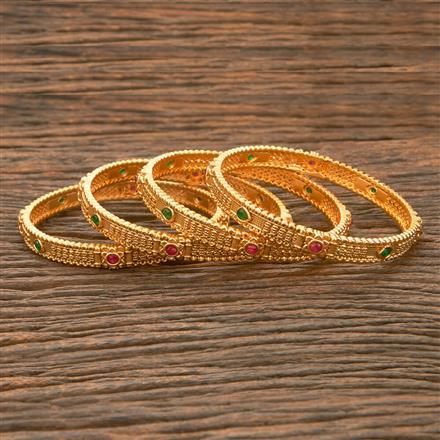
Bangles have been an indispensable part of Indian women’s ensembles for ages. Glass bangles, metal bangles, silver, metallic, and gold bangles - you will come across versatile versions of bangles in Indian history that women have adored beyond limits. While different occasions may demand different styles of bangles, antique bangles are something that goes well with any ensemble and any occasion, for that matter. Whether you are eyeing a boho look or wish to look classically elegant at your friend’s wedding, you can never go wrong with a pair of trendy antique jewellery bangles.
Antique bangles are all the rage now and unarguably so. They justify the ‘old is gold’ theme. These bangles represent designs and patterns of the bygone era, are crafted to offer them a rustic yet vintage appearance, and can boost the glamour of any ensemble in an effortless manner.
Antique bangles silver are the ideal choice for women who want to look elegant and stylish or just want to own a casual look without sparing much time and much ado. Antique bangles are versatile and can be worn with almost any outfit, be it for office wear, parties, festivities, evening outs, etc. These bangles can be worn by both young girls and women and can be paired up with any kind of Indian or Casual outfit. You can wear it with a saree, salwar, lehenga, an ethnic skirt, and a top, or jeans and Kurti. You can never go wrong with antique bangles set.
Considering the unprecedented attention and adoration, artificial antique bangles are now available in a host of designs and patterns. All the more reasons for fashion enthusiasts to celebrate. Whether you own a pair of trendy antique jewellery bangles or a string of bangles that are silver oxidised, you can rest assured never to go out of style. Since these bangles represent antiquity, you will always remain in trend with your antique bangle sets.
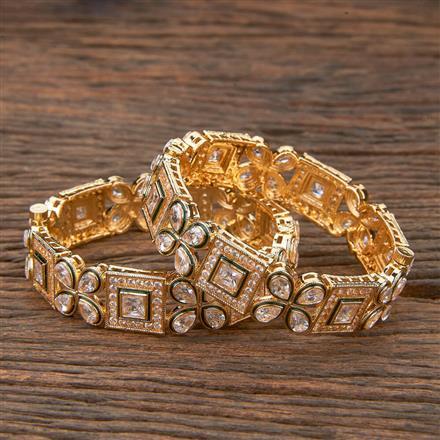
Ethnic Looks with Antique Bangles
Though we all want to appear our best each moment, the sedentary and fast-paced nature of today’s lifestyle doesn't offer us that much space and time. Festive occasions and celebrations are the times that offer us a much-needed respite from the daily hustles and bustles. It would be apt to say this is the time when we can put our feet up, go for a relaxing spa, paint our nails, and deck up in our favourite ensembles and jewellery artefacts.
Antique bangles are our best bet to ace any ethnic look any time, any day.
Kanhai Jewels is one of the leading manufacturers and suppliers of antique bangles collections available online in India. We are offering all kinds of the latest designs and styles in the antique bangles online collection at the most affordable prices.
Check out our extensive range of products, which includes antique bangles, classic bangles, openable bangles, studded bangles, designer bangles, and much more. You can get any product from our store at the most competitive price.
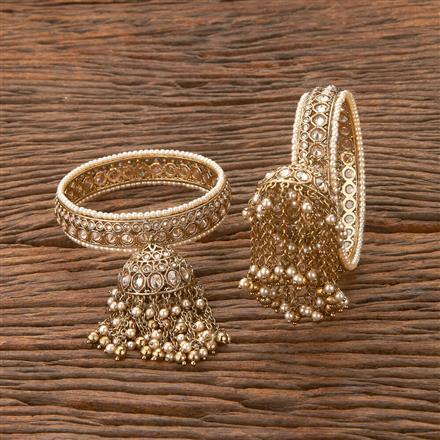
Get Sophisticated Antique Bangles Online At Wholesale Prices at Kanhai Jewels
Kanhai Jewels is home to Antique Jewellery, Kundan Jewellery, American Diamond (CZ) Jewellery, Polki Jewellery, Meena work Jewellery, temple jewellery, jewellery, and Western Jewellery. We have been providing excellent quality products for the last many years and have gained immense popularity among our customers because we believe in customer satisfaction.
Order antique bangles and sets online without worrying about the price tag. With Kanhai Jewels, you are assured premium products at unbeatable prices. And, what’s more? You can browse our extensive collection online with just a few clicks from the comfort of your home. Take your pick and place the order; we will deliver our artisan-handcrafted, luxury antique bangles, artificial antique bangles, and sets to your doorstep in no time.
2 notes
·
View notes
Text
Best Fashion Magazines In India
Fashion magazines have long been a popular way for Indians to stay up to date on the newest fashion trends. Before Pinterest and Instagram, fashion magazines were the only place to find out about famous celebrity looks, trends, makeup, haircuts, workout mantras, wardrobe inspirations, vacation advice, and more.
If you want to remain up to date on the latest style trends, check out our list of the Best fashion magazines in India.
Vogue Magazine - Vogue is a top fashion magazine in India. This North American magazine was originally introduced in India in 2007 and has since been one of the most reliable sources for fashion news. The magazine features fashion trends, wedding clothes, beauty tips, wardrobe essentials, styling guidelines, horoscopes, and lifestyle updates. In addition, vogue magazine covers include celebrities dressed in the most recent designer collections from both new and famous designers.
Savvy - Savvy is a globally recognised fashion magazine that focuses on women's well-being. It is a well-known women's magazine that publishes articles on topics such as lifestyle, health, food, beauty, and travel, with a tinge of Bollywood flavour. This magazine is apart from other fashion publications in India since it discusses and distributes stories about Real Women, Real Stories.
Harper’s Bazaar India - Harper's Bazaar is one of the oldest fashion magazines, having been published in the United States since 1867. In 2009, the North American magazine produced its inaugural Indian edition, which brought together fashion photographers, artists, designers, authors, and celebrity icons to provide a fresh perspective on beauty and lifestyle.
Elle Magazine - Elle is a French fashion magazine that covers all elements of fashion, health, beauty, and travel across the globe. The journal has over 42 worldwide versions, which are published in 60 countries. Elle Magazine used to focus on home décor. It now covers fashion, travel, entertainment, celebrity news, lifestyle, and fitness suggestions.
New Woman - New Woman is an Indian fashion and lifestyle magazine that compares favourably to worldwide publications. The magazine's editor is Hema Malini, a famous Indian actress. Pioneer Book Company handles the magazine's publishing department. The journal discusses a variety of themes, including relationships, finance, profession, cinema, books, legal issues, businesses, and more. However, the majority of the content is focused on women's health issues, body sculpting, and exercise. It also throws insight on the needs, aspirations, and goals of ambitious Indian women.
Cosmopolitan India - Cosmopolitan is one of India's most popular fashion publications, with circulation in 110 countries. The US-based periodical began as a family magazine and grew into a solemn publication. The Indian edition of the magazine covers topics such as health, horoscopes, fashion, beauty, sex, relationships, self-improvement, and careers.
Femina Magazine - Do you recall the popular beauty pageant 'Femina Miss India'? Femina is a prominent fashion magazine in India that also hosts and supports beauty pageants. This Indian magazine is one of the most popular fashion publications that tells the stories of Indian women.
Verve - Verve is one of India's leading home-grown premium international fashion publications, having been launched in 1995. The journal features interviews, Bollywood news, the newest style trends, beauty tips, food, travel, arts & culture, worldwide fashion, and more.
2 notes
·
View notes